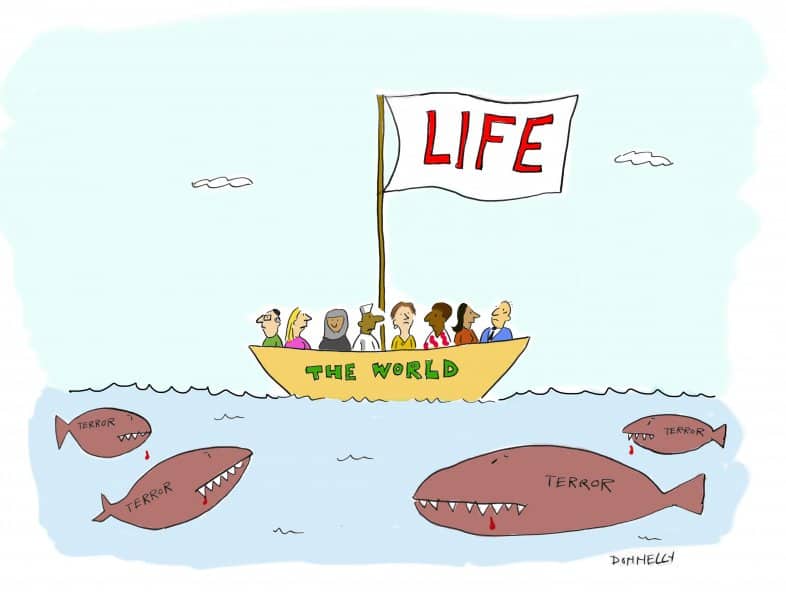How's quarantine life going? Are you and your coworkers enjoying managing remote teams?
Most people are pretty tired of the quarantine routine at this point.
While many states and countries are re-opening, there's still significant restrictions on what people can and cannot do. These of course include the vast majority of offices being closed for the foreseeable future.
Communication debt is coming due.
Lockdowns began for most of us some time in March. As we are deep into July at this writing, we're now in month 5 of all of this isolation, meaning:
- You haven't seen your team face to face in all that time
- You haven't shared a joke, a laugh, or a win together (except maybe over video or chat)
- No team outings, team building exercises, nor group meals.
In the short term, all of this is okay. You have your pre-existing relationships with them, and you probably did many of those bonding events only every few months, anyways.
Yet, over time, these bonds that make us human, and help teams stay cohesive start to wear down. This causes a whole bunch of problems that are not always easy to detect when managing remotely.
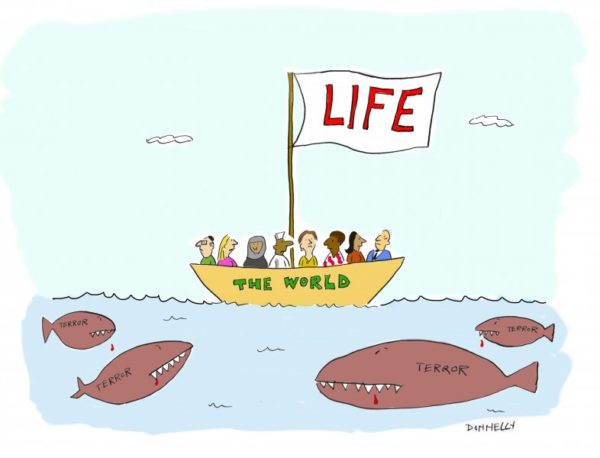
We're all in the same boat.
This communication debt and lack of relationship buidling is why companies like Buffer, Zapier, and many others who are always managing remote teams use in person visits on a regular basis.
Unfortunately, at this point, even for these companies native to remote, they're passing the point where they'd typically have team members get together in person. This is creating a variety of problems we want to explore today, so you can manage your remote teams the best you can, even with the conditions of COVID.

5 Problems You Didn't Expect When Managing Remote Teams in COVID
Jumping into managing remote teams because of lockdowns is a baptism in fire. Many of the skills you may have mastered in the office do not translate directly to managing remotely.
Here's a few of the problems we're all working through now:
- Problem #1: Not knowing how people are really doing
- Problem #2: Misunderstandings are much easier
- Problem #3: Meeting fatigue for everyone
- Problem #4: Elephants in the room
- Problem #5: Bringing a Fixed Mindset to today's challenges

Problem #1: Not knowing how people are really doing
How are each of your team members feeling? Do you know?
Really. Do you really know?
Or are you assuming because they haven't said something to you, things must be fine?
As we have talked about many times on the Lighthouse blog, open door policies fail. This is especially true considering you no longer have a door they can see and walk through.
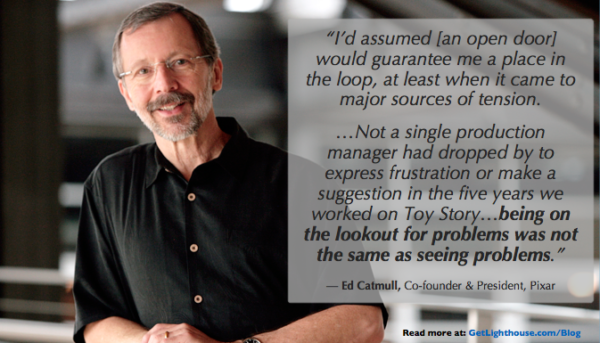
You have to ask.
While building Pixar into the animated movie powerhouse we know today, Ed Catmull learned that he had to be proactive in asking people how they were doing and about any problems he thought could be out there.
Unfortunately, the more well-liked you are, the more important you become, and the more people love their job, the less likely people are to come to you on their own. This is due to:
- Fear of rocking the boat or losing a good job they enjoy.
- Not wanting to inconvenience you with their problems or struggles.
- An assumption that you're too busy to ask.
So no matter if your team trusts you and loves working with you, or you're working through some problems that may have people acting more guarded, you need to make time to pro-actively ask them how they're doing.
You may want to even share some things you've dealt with to show them you're human, and make them feel safer opening up to you.
Further reading:
Need ideas on what to ask your team? Here's some great questions to use in your 1 on 1s with them:
- Check out our Hundreds of 1 on 1 Meeting Questions Great Managers Ask their Teams
- Specific to remote work, ask these questions found in the 3 Crucial Keys to Helping Your Team Transition to Remote Work Effectively

Problem #2: Misunderstandings are much easier
Imagine you're in a crowded bar with friends (I know, it may have been awhile). As your friend walks past you to head to the bathroom, they bump you, causing some of your drink to spill.
How do you feel? What do you say?
Now imagine, the same scenario, only this time, it's a stranger going past you and they bump you and spill some of your drink.
Now, how do you feel? Now, how do you react?
If you're like most people, the stranger gets a much stronger, and less forgiving reaction.
When you lose connection and time to bond with your team, it's easy for all of them to start treating each other more like strangers.
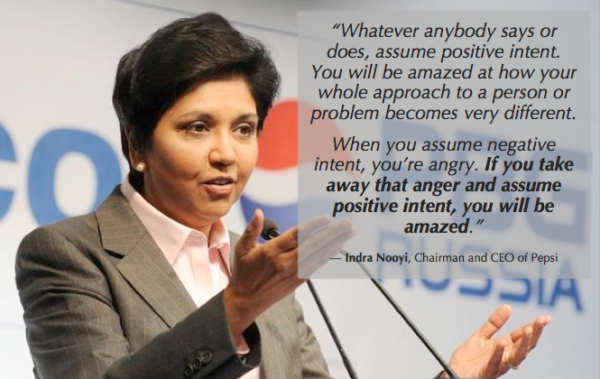
Make "Assume positive intent" a value on your team.
First and foremost, it's important that you give all your team members the benefit of the doubt. It will make a big difference on how your team will feel about you, and avoid putting your foot in your mouth.
Just last night, I was talking to a friend where he's been hit with assumptions of negative intent repeatedly, like a meeting where he was criticized for eating during it.
As it turns out, he wasn't on the original invite, and was invited late to the meeting in the middle of him eating lunch. To get into the meeting when he was told to, he literally jumped in as fast as he could open his laptop.
In this case, the executive who criticized him recognized the mistake and apologized, but in most cases, they haven't been hearing his side.
Not surprisingly, he's been interviewing, and the real reason for our call was to discuss the great offer he has now. He only started interviewing because of those toxic actions, so don't rest on your laurels thinking unhappy staff can't quit right now. The market is always good for talented people.
Next time someone on your team does something you feel is a problem, start by assuming positive intent. Hear their side of the story, and then see what makes sense to correct.
Further Reading:
To ensure assuming positive intent really sticks as a mindset for you and your team, remember:
- Your actions are the key to building a great company culture.
- You need to repeat yourself many times for a new value or concept to sink in for your team. Learn about the power of repetition here.

Problem #3: Meeting fatigue for everyone
If you've been a manager for long, you know that meetings can be a huge part of your work day.
Yet, there's something different about having 10 Zoom video calls versus moving around all day in conference rooms and walk & talks.
Overcome meeting fatigue for you and your teams
There's no silver bullet to fixing meeting fatigue. Instead the best thing you can do is acknowledge it exists and work to fix it on a case by case basis.
A few ideas to consider:
- Do we need video for this? If everyone is looking at a shared document or file, video isn't really that important. Let people turn them off, so that you can for sure have video on for things like 1 on 1s where you really need to see facial reactions.
- Do we need to have this meeting? A key lesson of remote organizations like Gitlab and Buffer is to embrace asynchronous communication, which means some meetings are better as a document or email.
- Could this be ad hoc? With no random chats in the kitchen, many peers are scheduling meetings to catch up quick. Yet, they can quickly fill 30-60 minutes if it's scheduled. Instead, try to squeeze in a phone call when you have the constraint of only 5-10 minutes.
In addition to asking the above 3 questions for each meeting you see on you or your team's calendar, you can also consider more broadly applicable changes like:
- Have an Armeetingeddon: Cancel all recurring meetings on everyone's calendars, forcing them to be re-evaluated as to whether they're necessary. Repeat as often as needed.
- Change default meeting lengths: In your corporate calendar settings you can change the default length of a meeting from 60 to 30 minutes. You may be surprised how much of an impact even that change can make.
- No Meeting Days or windows: To ensure you all have good focus time to do real work, set aside blocks of time when no meetings can be scheduled with your ICs, or choose a day of the week when no one has meetings.
Mix and match the tactics that best fit your team. Combined with smart breaks through your work day, you can significantly reduce the amount of meeting fatigue you and your team faces.
Further Reading:
Take control of your meetings schedule with our deep dives on the subject:
- Learn how to master asynchronous communication from a remote expert in our post here.
- See more of our favorite meeting tips in 10 Tips for Conducting Effective Meetings.
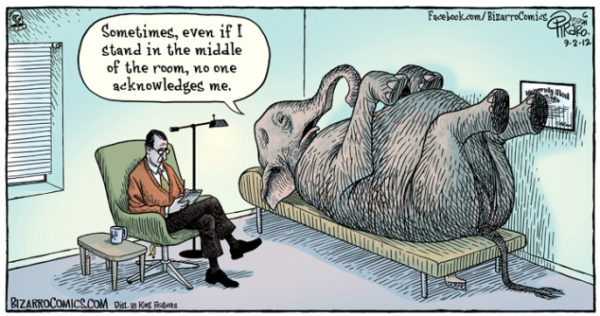
Problem #4: Elephants in the room
Quarantine is wearing on everyone I talk to, regardless of their stage of life or circumstances. These challenges include:
- Families with small children struggling to care for their kids and both parents working.
- Families with school-aged kids struggling to handle their kids education remotely and working.
- Anyone whose spouse or partner lost their job, causing financial strain.
- Painful isolation and loneliness for those single during the pandemic.
- Strained relationships for non-compatible couples who found themselves in close quarters non stop.
- Fear and concern around family members who are in at-risk groups for COVID.
- Fear and concern for family members who need life saving medical procedures, but are scared or unable to get them because of COVID.
And many, many more.
Face the truth of our present situation.
Bottling up feelings, emotions, and concerns always eventually catches up with us. 5 months into COVID, a lot of people have some pretty full bottles.
I had a major epiphany about a week ago on exactly this front. Looking at the impact of the Spanish Flu, I saw we're in this for another 12-18 months.

I realize that's likely not good news to any of us (and I took a big sigh at first when this hit me), but it's a truth that will set you free.
By admitting that's the case, it allowed me to face some questions and challenges I had been putting off. Knowing how long it will be made it easier to take back some control on my life and plan accordingly.
For me, that means planning to move when my lease is up, and being intentional about choosing a place to live for a year or two based on COVID conditions, not the pressure of it being a long term home.
For others, that may be things like:
- Creating a "bubble group" of people you and your children can safely spend time with while avoiding most other infection risks.
- Breaking up with someone who you realize isn't right for you and you shouldn't spend another year with.
- Finally investing in more tools, space, or equipment to help you work from home better.
Regardless of the choices to be made, moving on from a belief that "this is temporary" and to "this is life for the next year or two" can make it easier to make a decision you've been putting off or avoiding.

Call out those elephants.
In general, you are absolutely *not* a therapist for your employees, but in times like COVID when managing remote teams, it's important you show you care.
One of the best things you can do is talk about struggles you and others are experiencing and work together on solutions. You cannot avoid the fact that people face things like the 7 situations I described above, and they absolutely are affecting their work.
As Sheryl Sandberg, COO of Facebook, put it when she faced the uncomfortable conversation of the death of her husband with the hundreds of staff that she worked with:
"Speaking openly replaced the fear of doing and saying the wrong thing. One of my favorite cartoons of all time has an elephant in a room answering the phone, saying, "It's the elephant.”
Once I addressed the elephant, we were able to kick him out of the room."
Opening up and asking about elephants in the room, and helping your team deal with them can be scary, but the payoff is enormous. The rush of relief afterwards, and the long term changes that come with it make everything better.
Further Reading:
Once again, as a manager, it's important you ask good questions to open these discussions up, but you also need to be prepared to help them. Here's how:
- If one of the elephants relates to the fate of your business, then start with our Crisis Leadership questions here.
- When you ask about their elephants, if the one on one meeting gets too personal, here's what to do.
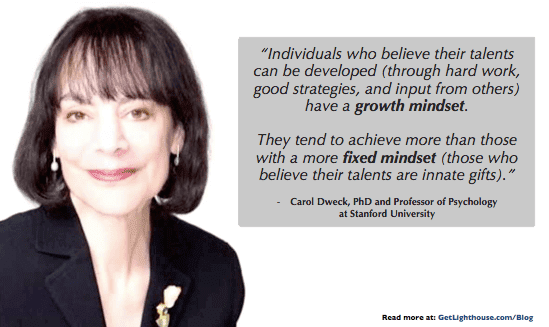
Problem #5: Bringing a Fixed Mindset to today's challenges
No one was ready for the changes we're facing. If a year ago I told you:
- Every office in the world would be closed for months
- You can't go to the gym or play any team sports, and professional sports would go on hiatus, too
- Children would be held home from school and might miss a second year in some places
- Global economies would be on the brink of collapse and entire industries would be decimated
You'd have laughed at me.
Unfortunately, this is our reality.
You can cry, scream, get angry, pretend it's not happening, or any number of other negative reactions, but they won't change anything.
Instead, you need to let go of any fixed mindset you have and embrace a growth mindset when managing remote teams at times like today.
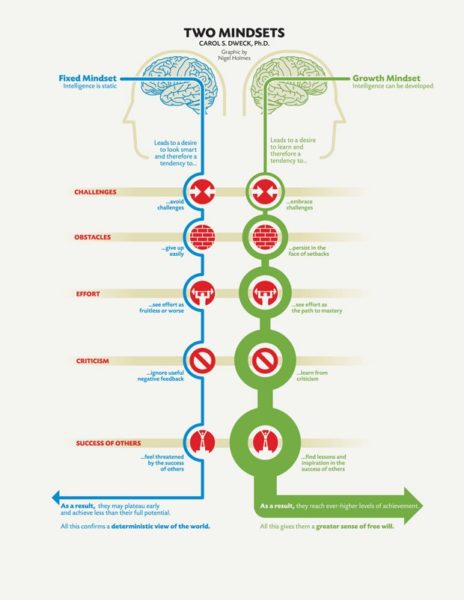
Embrace a growth mindset to lead through COVID
As the Andy Grove quote at the top of this post reminds us, "A given managerial approach is not equally effective under all conditions."
To succeed today, where we went from a booming economy to a struggling one, and from a work environment you know to a foreign, isolated one, you have to embrace growing and learning.
Keep what's working, and replace the rest. This includes:
- Your habits and routines: Whatever your exercise, mental health, and productivity habits were in the office, you have to create new, equivalents at home.
- Meetings and communication: As we already discussed, it's easy to have too many meetings and have communication issues to work through.
- The needs of your team: What worked to help each team member thrive is unlikely to be the same now as it was 6 months ago. Find out what they need and help them get it.
With a fixed mindset, all you'll see is barriers. You and your team will lament all the things not working and feel hopeless.
However, if you flip you and your team's minds to a growth mindset, you can embrace the challenge, and make the necessary changes. You may not get it right the first time, but you can iterate and learn your way to the right tactics, approaches, and winning formula.
Best of all, you'll stand out from the crowd. Most people aren't thriving right now, so if you find even a few ways to help you and your team members succeed under today's conditions, you'll make a huge difference for them and your company.
Further Reading:
Need help embracing a growth mindset? Start here:
- Learn all about Carol Dweck's research into the impact of Growth Mindsets in her book here, and her TED talk here.
- Embrace being great at managing remote teams by learning our 11 Essential Tips for Managing Remote Employees here.
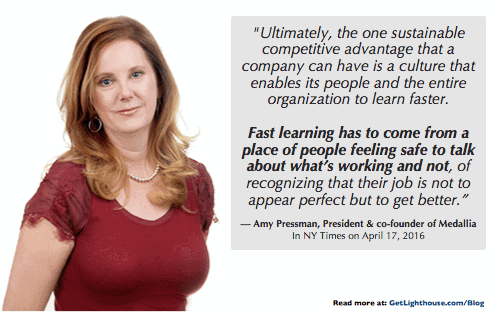
Conclusion: We're here. Let's make the best of it.
No one was prepared for what COVID has brought us all face to face with. The best thing you can do as a leader is lean into these challenges and do the best you can to help everyone make the best of it.
How are you make the best of managing remote teams during COVID?
Are you growing as a leader? Are you building the skills you need?
Whether your team is in office with you or remote, Lighthouse Lessons can teach you the skills you need to better lead, motivate, and grow your team. Let us help you navigate the unique challenges of being a leader like we helped Daniel by learning more and signing up here.

